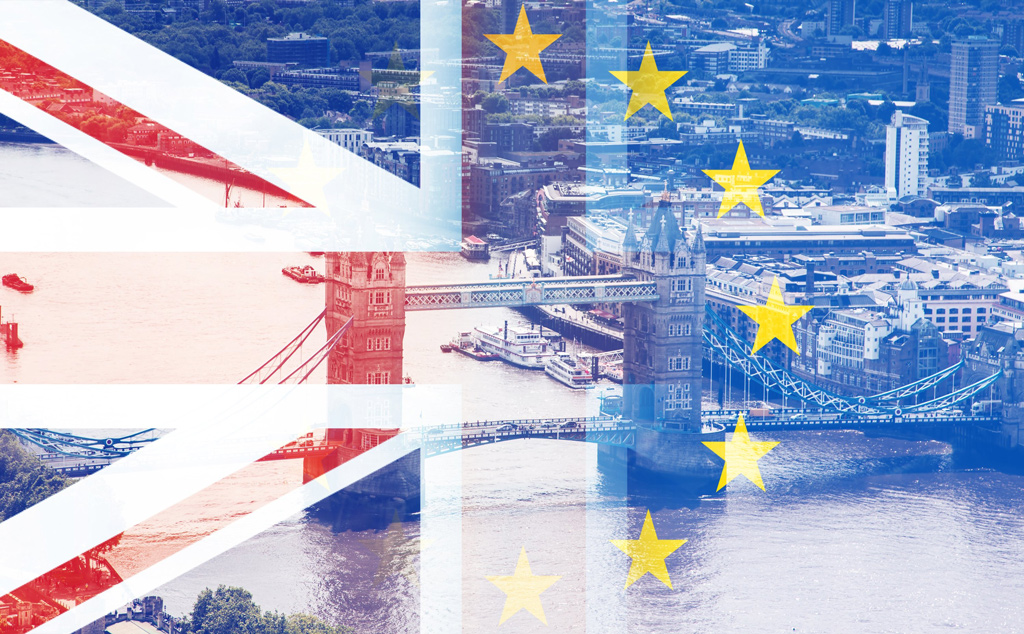he European Union and the United Kingdom reached a new agreement in principle last week on a text called the “Windsor Framework: A New Way Forward” to resolve the issues under the so-called Northern Ireland Protocol they previously signed. Before analyzing the details of the framework, which replaces the old protocol and sets out the parameters of the new period related to the Northern Ireland issue, it is necessary to briefly remember how the parties came to this process.
It should be firstly noted that one of the most important issues between Brussels and London in the U.K.’s separation from the EU, a.k.a. Brexit, was related to the Northern Ireland issue. As known, Ireland is divided into two regions. In the south, there is the Republic of Ireland, which is an EU member state, and in the north, there is autonomous Northern Ireland, which is part of the U.K. Throughout the U.K.’s membership in the EU, there was no border or customs control on the island because the Belfast/Good Friday Agreement of 1998, which ended the conflict between pro-U.K. Protestants in Northern Ireland and Catholics defending an integrated Ireland, and does not allow a physical border to be drawn between the two areas on the Island. With Brexit, there occurred a complete enigma about how to trade between the two regions of Ireland. Therefore, the “divorce process” between the EU and the U.K. was quite painful for both sides.
Under these circumstances, the EU and the U.K. sought to mitigate the possible harsh effects of Brexit by signing an interim protocol on the Northern Ireland issue besides the Brexit Agreement. According to the first protocol signed in 2019 and entered into force in 2020, Northern Ireland would continue to be a part of the EU’s single market rules despite Brexit. As a result, all the EU’s trade savings would naturally affect Northern Ireland. The protocol also stated that the controls for goods from the Isle of Britain (England, Scotland and Wales) to the Republic of Ireland would be carried out at the ports of Northern Ireland. Thus, a de facto border was formed between Northern Ireland and the U.K., which it was politically part of. These two critical issues were troubling London and pro-British people in Northern Ireland as they politically and commercially drove Northern Ireland away from the U.K. and brought it closer to the Republic of Ireland. In addition, duty-free goods entering the EU from the U.K. and the U.K. from the EU have caused trade losses for both parties.
The movement of goods issue
To address the problem of the movement of goods, U.K. Prime Minister Rishi Sunak and European Commission President Ursula von der Leyen met in Windsor on Feb. 27. Following the meeting, a new agreement was signed and the parties agreed that there would be no border between Northern Ireland and the Republic of Ireland in accordance with the Belfast Agreement. However, a lane system comprising red and green lanes related to goods entering and leaving Northern Ireland will be implemented. Goods that cross from Britain to Northern Ireland and stay there will use the green lane, which is not subject to any control. This allows the goods produced in Britain to be more accessible in Northern Ireland. However, small-scale checks on the green lane will be carried out to prevent possible irregularities. Goods that are due to travel into Ireland (and therefore into the EU) will use the red lane, which is subject to customs checks. This will minimize trade losses suffered by both Ireland and the EU and Northern Ireland and the U.K. due to duty-free goods.
As in the previous protocol, the European Court of Justice (ECJ) will remain the arbiter of EU law but the increased prominence of independent arbitration mechanisms will reduce its role. In this way, with the emergency mechanism called the “Stormont Brake” (venue of the Northern Ireland Parliament), the British government could temporarily suspend the terms of the framework in the most exceptional circumstances if there is a request from one-third of parliamentarians in the Northern Ireland Parliament. Therefore, Northern Ireland will be able to protect itself by pressing the Stormont emergency brake against possible radical EU regulations that could adversely affect its economy. Also, that suspension will only be challenged through the independent arbitration mechanisms, not the ECJ. With this mechanism, the British government actually takes back some control from the EU, and prevents Northern Ireland from moving away from the U.K. and the anti-British faction in Northern Ireland from gaining power.
Parliamentary approval required
Meanwhile, on the U.K. side, the new agreement must be ratified by the parliaments of Northern Ireland and the U.K. for its implementation. In this context, the welcome statements regarding the agreement by the main opposition Labor Party as well as the pro-British Democratic Union Party and the separatist party Sinn Fein in Northern Ireland are remarkable. Therefore, it is estimated that the Windsor Framework will be quickly approved by the U.K. Likewise, on the EU side, the agreement needs to be passed with a qualified majority in the Council of the EU, and some parts need the consent of the EU Parliament. As the commission is a part of the new agreement, it is highly likely the council and Parliament will also ratify the Windsor Framework.
More importantly, some question whether the framework will cause problems like the old protocol. To put the last to be said at the beginning, there is a strong expectation that the Windsor Framework will be long term as the major parties in the U.K. and Northern Ireland are positive about it. It is also expected that the EU and the U.K. will adopt a more conciliatory stance regarding possible technical problems that may arise in the new period in line with soft Brexit principles. Therefore, the Windsor Framework could be a permanent agreement between the EU and the U.K. on the Northern Ireland issue.
In short, the Windsor Framework shows that the EU and the U.K. have found a “middle ground” on the Northern Ireland issue, that the parties prioritize mutual interests and that they want to continue a soft separation despite the will of hard Brexit supporters. Therefore, the Windsor Framework should be evaluated on the good intentions shown by the parties to each other rather than the concessions they made to each other.

